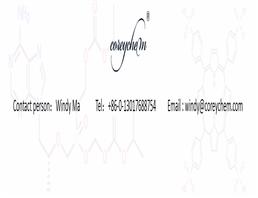| Description |
Perifosine (KRX-0401) is a novel Akt inhibitor with IC50 of 4.7 μM in MM.1S cells, targets pleckstrin homology domain of Akt. Phase 3. |
| In vitro |
Perifosine develops anti-proliferative properties with IC50 of 0.6-8.9 μM in immortalized keratinocytes (HaCaT), and head and neck squamous carcinoma cells. Perifosine strongly reduces phosphorylation levels of Akt and extracellular signal-regulated kinase (Erk) 1/2, induces cell cycle arrest in G1 and G2, and causes dose-dependent growth inhibition of mouse glial progenitors. Perifosine (10 μM) completely inhibits the phosphorylation of Akt in MM.1S cells. A recent study demonstrates Perifosine induces cell cycle arrest and apoptosis in human hepatocellular carcinoma cell lines by blockade of Akt phosphorylation. |
| In vivo |
Perifosine combining with temozolomide reduces tumor proliferation (a PDGF-driven gliomagenesis) in vivo. The results indicate that Perifosine is an effective drug in gliomas in which Akt and Ras-Erk 1/2 pathways are frequently activated, and may be new candidate for glima treatment in the clinic. Both oral daily and weekly administration of Perifosine significantly reduce human MM tumor growth and increase survival, compared with control animals treated with PBS vehicle only. Perifosine induces thrombocytosis and leukocytosis and increases myelopoiesis in murine marrow and spleen, whereas it causes apoptosis in myeloma xenografts. |
| Uses |
Antineoplastic. |
| Uses |
It acts as an Akt inhibitor and a PI3K inhibitor, and is a drug candidate being developed for a variety of cancer indications. |
| Uses |
An alkylphospholipid which inhibits Akt activation and the anti-apoptotic MAPK pathway. |
| Definition |
ChEBI: A phospholipid consisting of 1,1-dimethylpiperidinium-4-yl hydrogen phosphate in which the hydrogen is replaced by a stearyl (octadecyl) group. |

 China
China







